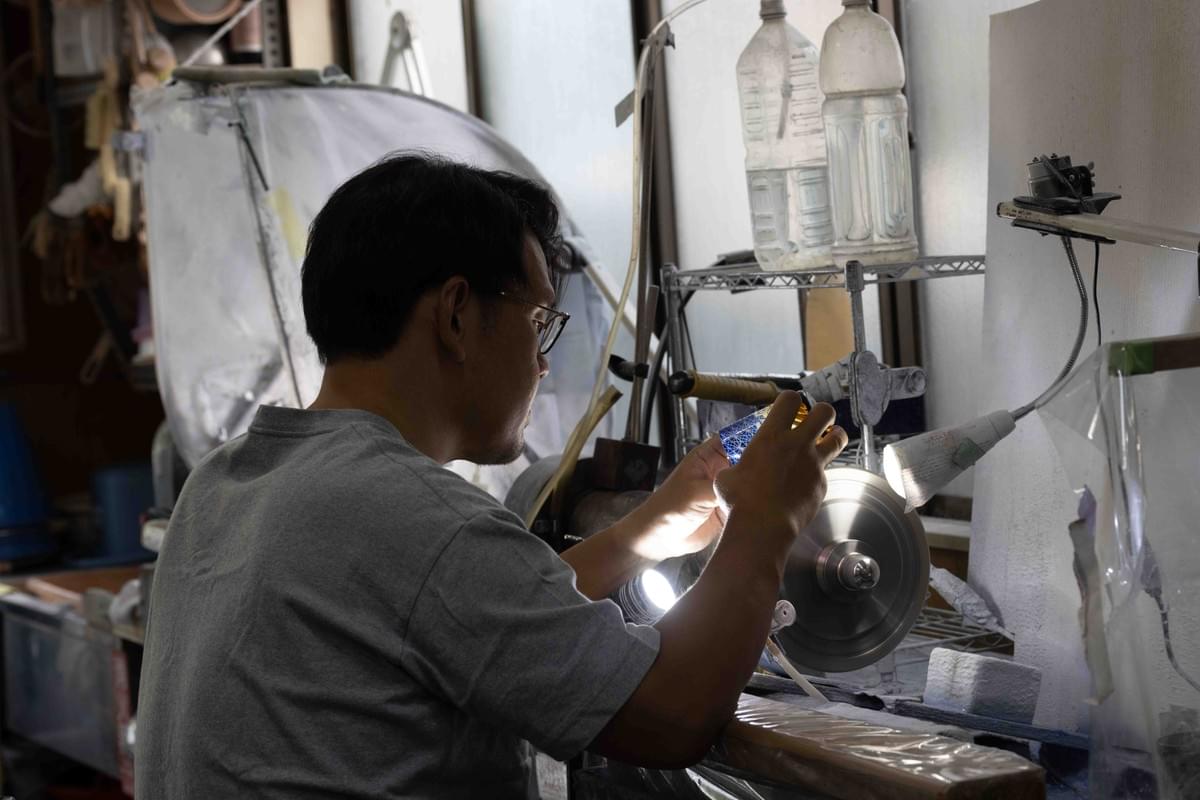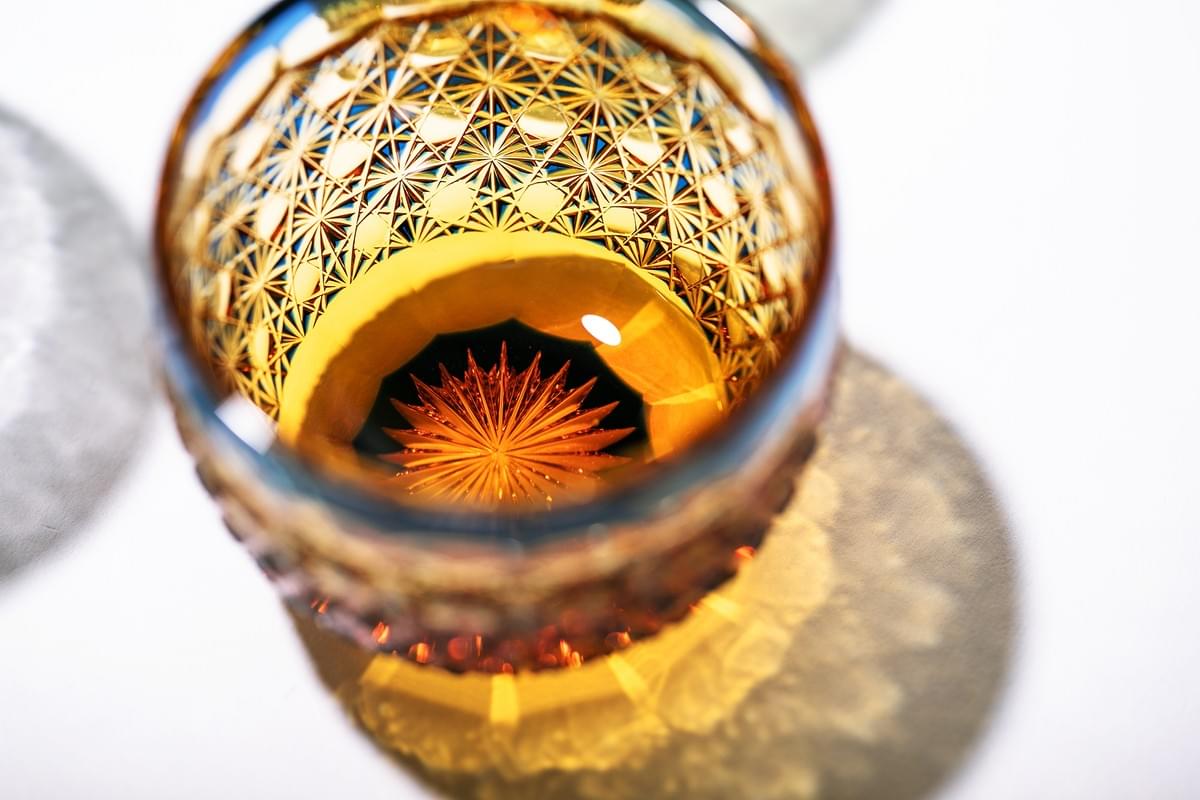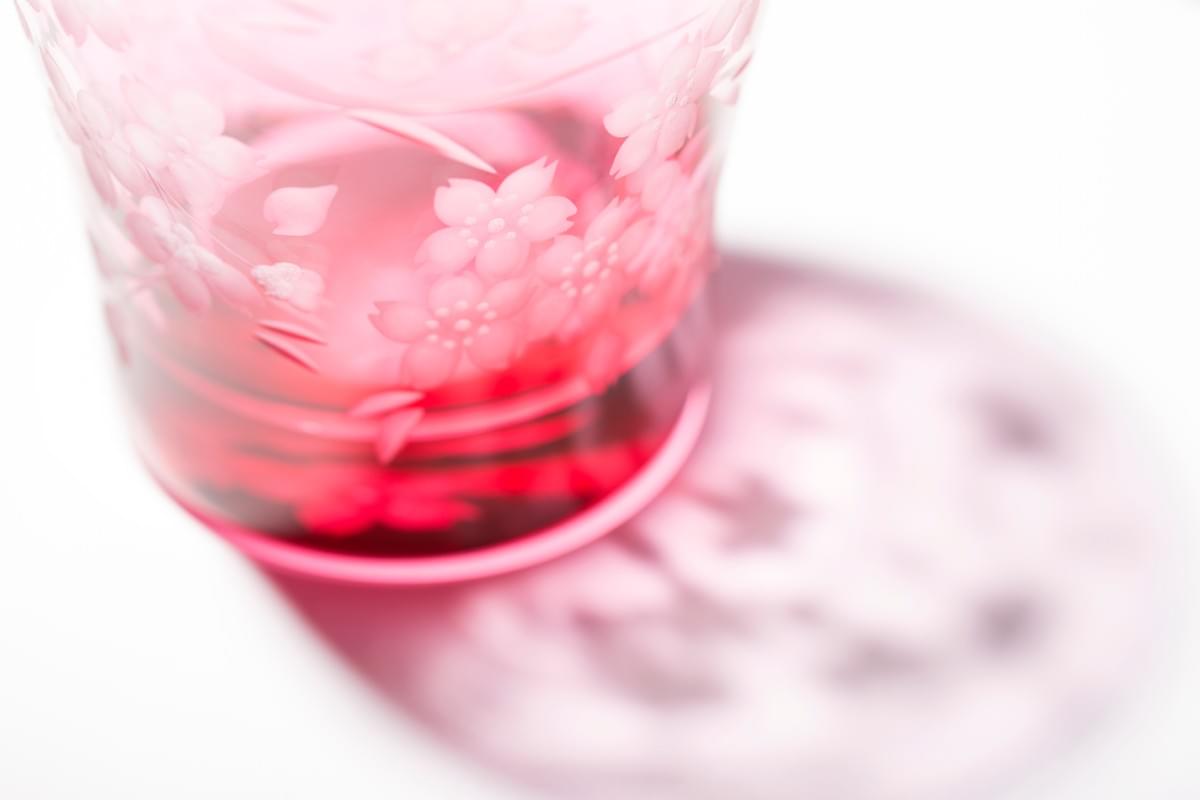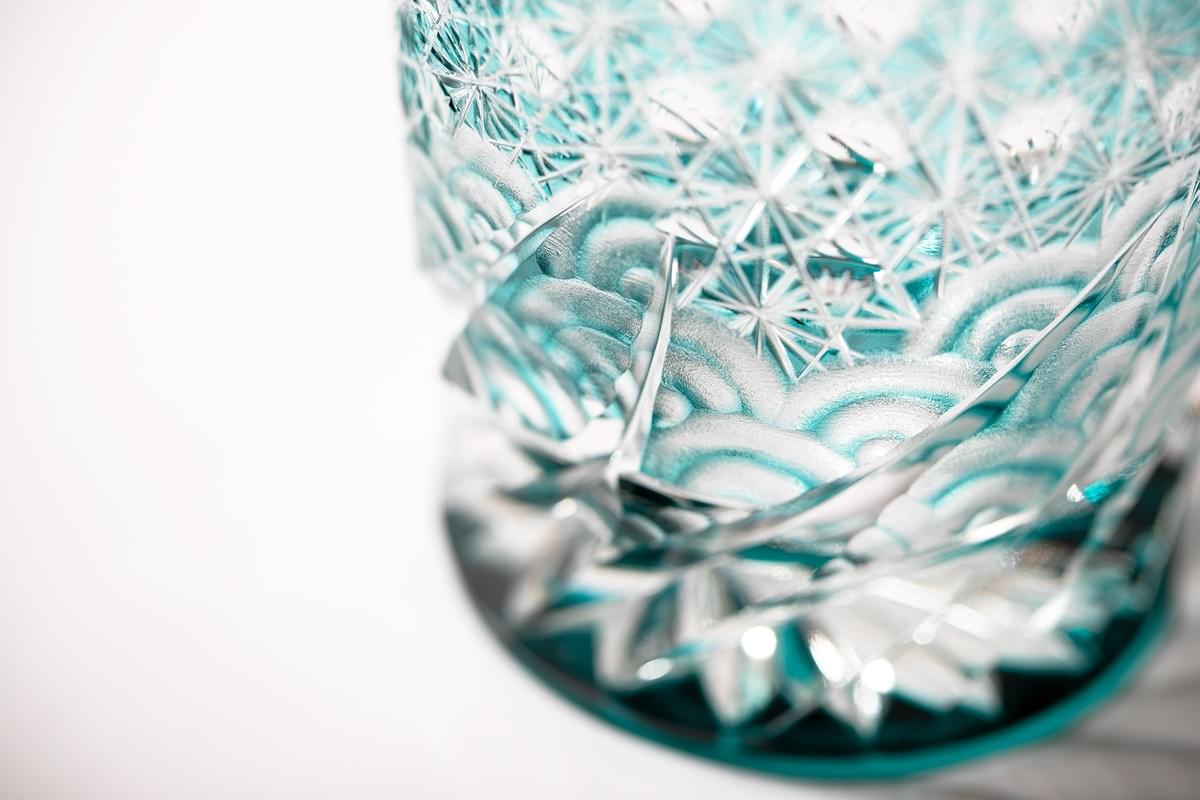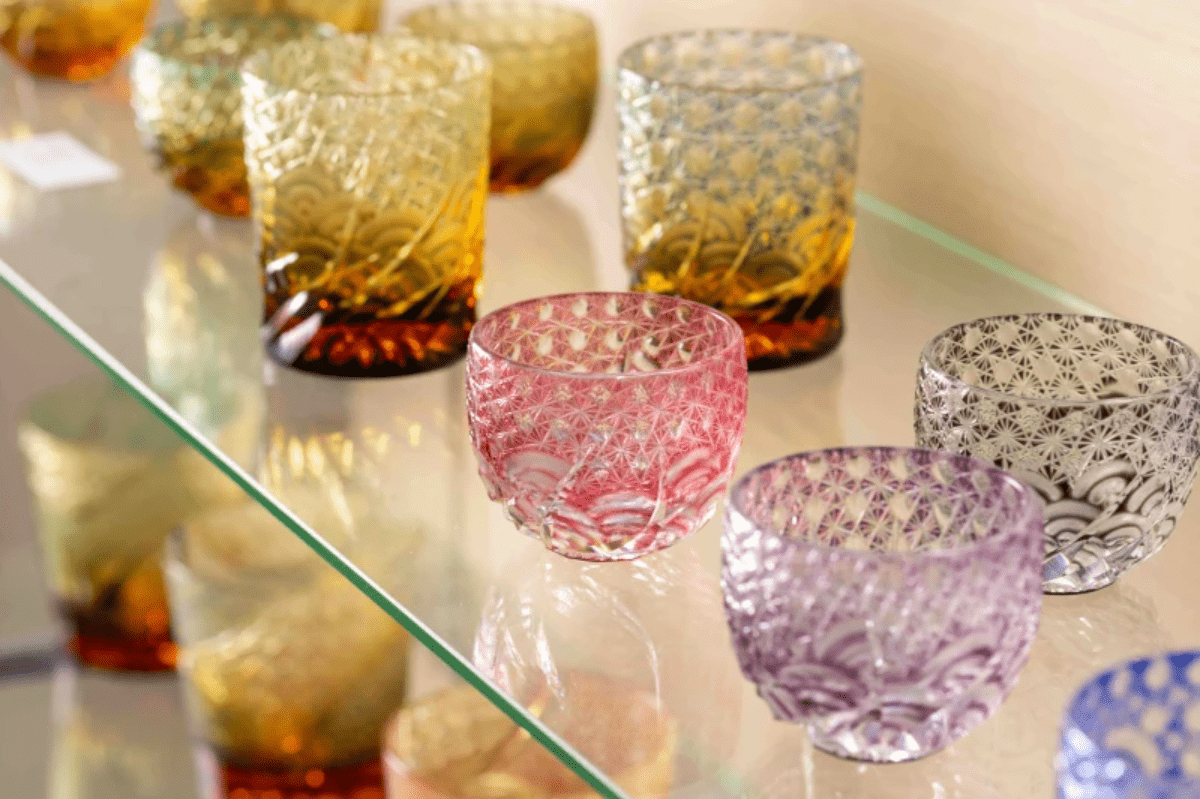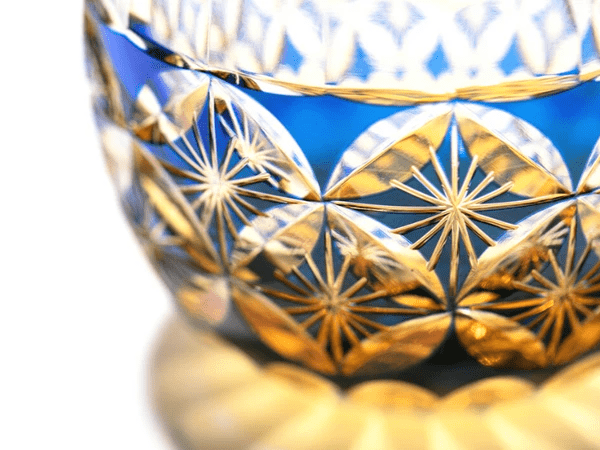

Yamada Glass Works
Edo Kiriko, Unchanging Commitment, Evolving Technique

Yamada Glass: Our Commitment
Eitaro Yamada established Yamada Glass, after training under British glass-cutting engineer Emanuel Hauptmann.
Eitaro created the “Hana Kiriko” technique, inspired by the gravure technique, in which glass is pressed against a rotating disk for polishing.
Inheriting the spirit of this style of glass forming, he has continued to develop the techniques of Edo Kiriko and Hana Kiriko over a long period of time. Constant evolution and innovations has allowed for various unique creations.
In recent years, we have also been focusing on developing “art-pieces” with enhanced emphasis on intricate fine details and actively participating in exhibitions both in Japan and overseas. Beautifully and delicately designed glass works have been proven to be extremely popular both in Japan and abroad as art and are also used in corporate commercials and various media.What makes Yamada Glass stand out?
1. The use of traditional pattern “Yukari Tsunagi” in the style of Yamada Glass
 One of the original cuts representing Yamada Glass is “Yukari Tsunagi”. The entire surface is decorated with thin overlapping line connections, which are popular among Edo Kiriko patterns, and the margins are polished into a circular shape. Continuous lines and circles represent “connection”, meaningful and a play on destiny.
One of the original cuts representing Yamada Glass is “Yukari Tsunagi”. The entire surface is decorated with thin overlapping line connections, which are popular among Edo Kiriko patterns, and the margins are polished into a circular shape. Continuous lines and circles represent “connection”, meaningful and a play on destiny.
The main characteristic of this is that the pattern on the other side is reflected from the circle part. By connecting the pattern in the foreground and the pattern in the reflection, it creates a complex and deep space-like impression. Many of our customers have praised it as a design that you won’t get tired of looking at.
2. A unique world drawn by curved lines of “Hana Kiriko”
 One of Yamada Glass’ most distinctive features is the “Hana Kiriko” technique. Hana Kiriko uses Edo Kiriko techniques to create a realistic expression, such as shading the surface softly and finishing without necessarily a polish, this in turn creates “gradation”. Unlike Edo Kiriko, which has a straight cut and polishes the glass to give it a shine.
One of Yamada Glass’ most distinctive features is the “Hana Kiriko” technique. Hana Kiriko uses Edo Kiriko techniques to create a realistic expression, such as shading the surface softly and finishing without necessarily a polish, this in turn creates “gradation”. Unlike Edo Kiriko, which has a straight cut and polishes the glass to give it a shine.
Even when carving a single pattern, the texture and depth can be expressed by using multiple diamond wheels. By cutting more carefully and finely, we aim to create realistic expressions of plants and animals.
A great example is the typical cherry blossom pattern, the notches of the petals, fine stamens, and pistils are faithfully reproduced. The way that the pattern is designed and expressed depend heavily on the technique and sense of the craftsman.
Among the many Edo Kiriko studios, it is rare to find a studio with craftsmen who can use both Edo Kiriko and Hana Kiriko techniques. At Yamada Glass, we take advantage of these two styles to create our truly unique designs.3. Use of the traditional pattern “Seigaiha” design inspired by blue and green glass
 A popular design of Yamada Glass is the “Seigaiha” pattern. When we think about creating an original piece, we often get a hint from colours of the glass. This design was inspired by the colours of blue and green in the form of waves.
A popular design of Yamada Glass is the “Seigaiha” pattern. When we think about creating an original piece, we often get a hint from colours of the glass. This design was inspired by the colours of blue and green in the form of waves.
The fortune pattern “Seigaiha” that appears in the Tale of Genji has a meaning of “eternal happiness and peaceful life”. By finely carving into the gaps between the straight cuts of Edo Kiriko using the technique of Hana Kiriko, the contrast with the wave pattern, which has a slightly different expression for each piece, becomes an interesting work. The special feeling of not being able to make the same thing is also a popular point because it truly becomes a one-of-a-kind piece.Outline of Yamada Glass Works

【Business content】
- Production, wholesale, and sales of traditional craft Edo Kiriko
- Corporate OEM, original project production
- Event announcement【Profile】
- Teruo Yamada
- Masaaki Yamada
- Rune Yamada【Store lists】
- Retail stores: Shinjuku Isetan, Ginza Mitsukoshi, Hakata Hankyu, etc.
- Online Stores: Nihon Kogeido, Garando, Edo Monostyle, etc.



“Edo Kiriko”, which began in the Edo period and has continued to fascinate the world

Kiriko is essentially a cut glass. It is said that in Tenpo 5 (1834), Kagaya Kyubei, a Vidroya in Tenma-cho, Edo, carved a pattern on the surface of the glass with emery powder. In the early Meiji period, Japan’s first Western-style glass factory was built, and the entire country actively promoted the development of the glass industry and the training of craftsmen.
Under such circumstances, in 1881 (Meiji 14), Emanuel Hauptmann, a cutting engineer, was invited from England. He taught cutting techniques and gave the foundations which have constantly evolved and developed to our modern day Edo Kiriko. From the Taisho period to the early Showa period, polishing techniques for crystal glass were developed, and “Edo Kiriko” grew into a representative glass craft of Japan.
In 1985, it was designated as a traditional craft industry in Tokyo, and in 2002, it was also designated as a national traditional craft. Today, modern designs have also appeared in collaboration with young designers and continue to fascinate the world with their beautiful brilliance.




Product Examples
Yamada Glass Works produces many products focused on Edo Kiriko and Hana Kiriko. Below are some of the products we have produced in the past, which can be purchased through our online shop.
Contact Us
Thank you visiting Yamada Glass Works. Please feel free to contact us if you have any questions, opinions, or impressions regarding our products.
After receiving and confirming your inquiry, we will respond within 7 days. If there is no reply, there may be a system error, so please contact us separately.
Workshop location
Showroom (reservation required)
Address: 1-4-14 Tachibana, Sumida-ku, Tokyo
03-3612-6875

